Once when I was teaching fifth grade I mentioned to some of the students that they weren’t the best and that there would always be somebody better. This elicited a wave of sincere shock and disbelief from them. What about this, what about that were all questions that quickly followed their gape-mouthed expression. These kids needed to read a book akin to Wally the World’s Greatest Piano-Playing Wombat. It holds the title of being the longest-titled book that we’ve read in recent memory. It’s a title so long we couldn’t add any words to our review title, lest it not be accepted by search engines. , as well as being one that elementary kids will love to hear, but also one that readers, won’t mind reading.
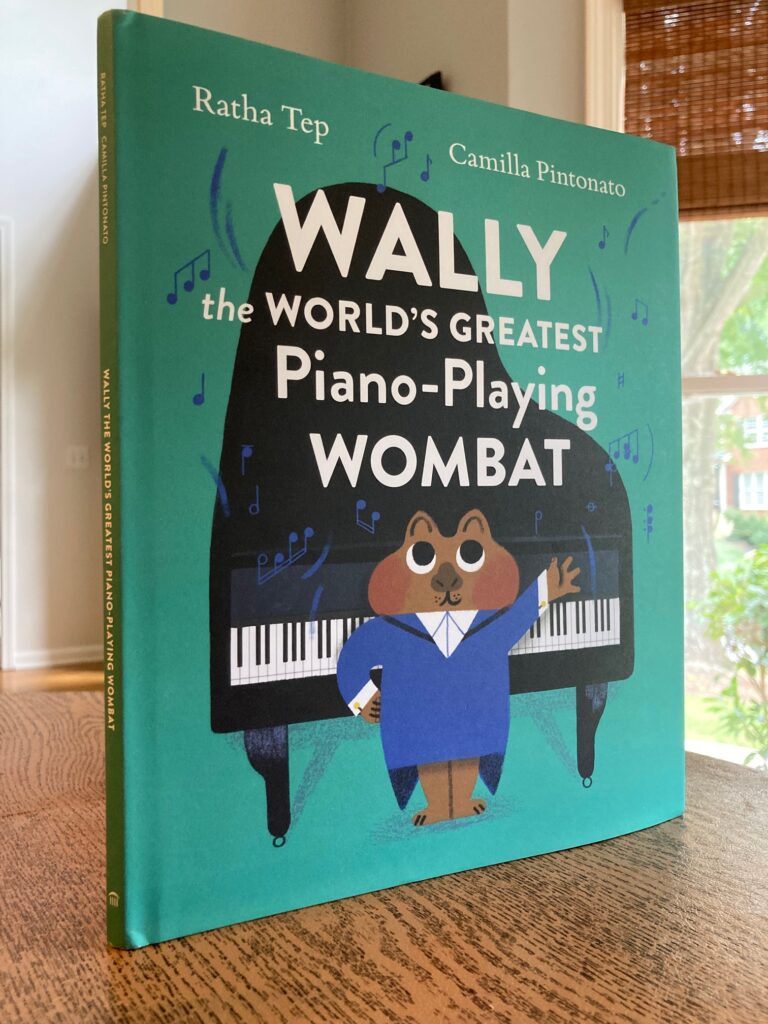
Wally the World’s Greatest Piano-Playing Wombat is a read-along book. It’s one of those books that early through middle elementary school-aged students will love to have read to them. Those older students will boastfully disagree with the story in parts, but (hopefully) secretly know that the message the book is trying to impart is needed for everyone. It’s a book that is heavy on alliterations, cute painted artwork, and more wombats playing the piano than kids have ever seen before.
Why a wombat? My personal reason is that kids know that a wombat is a real animal, but the odds of them ever seeing one, much less one that can play the piano, are very low. That, plus his name is Wally, and unless you’re going to make him a walrus, the book doesn’t work-and even then the walrus’ nature would lead to getting the piano wet.
Wally practices playing the piano every day and becomes the best in the world at it. One day he looks to his left and sees a wombat wearing a red jacket who can play the piano much better than him. This motivates Wally to add tricks to his piano playing routine by tap dancing and twirling balls on his nose. However, the red jacket wombat is able to incorporate these new tricks also. All of this is too much for Wally, who becomes angry, frustrated, and fumes away from the piano.
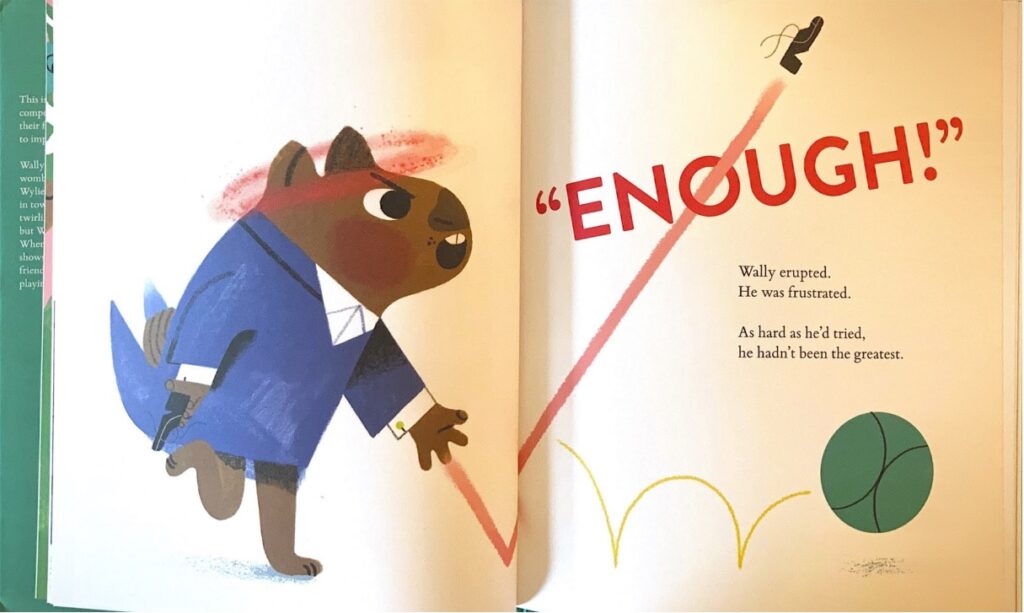
Then one night he spies the red jacket wombat lurking around his abandoned piano. Wally races out to see what’s going on only to have the red jacket wombat Elton John introduce himself as Wylie. Wylie has set up a picnic for the two to share and proceeds to tell Wally that he likes the way that they used to play together.
This surprises Wally because he’d always thought of their piano playing duels as a competition instead of friends who are sharpening each other’s talent. The two new friends combine forces to explore new ways to take their talents to new heights. They quickly realize that their teamwork is paying off and they’re the best at what they do until someone even better arrives on the scene.
The main driver behind Wally the World’s Greatest Piano-Playing Wombat is the story. The art is irresistible and makes you want to adopt a wombat, even though most adults have no idea if it’s a good pet or not. Truth be told, as long as it can play the piano and has the disposition of Wylie, we’re down with it. The text is concise, well-paced, and printed large enough so that kids can easily read it. This is simple, effective storytelling that kids will really enjoy.
Educators and parents will admire that the book teaches kids that it’s not always about them. Of course, that aspect is only one way to look at the book. It’s telling kids not to rest on their laurels and that teamwork is sometimes a great way to move forward. It’s about having confidence in what you do and always believing in yourself. Maybe it’s a motivational allegory for young entrepreneurs to always keep inventing and improving. Wally could be seen as any of those things or more. Anyway, when kids look at the book it’ll be entertaining and a great way to get them to engage during story time.
Wally the World’s Greatest Piano-Playing Wombat is by Ratha Tep with illustrations by Camilla Pintonato and available on Princeton Architectural Press.
There are affiliate links in this post.

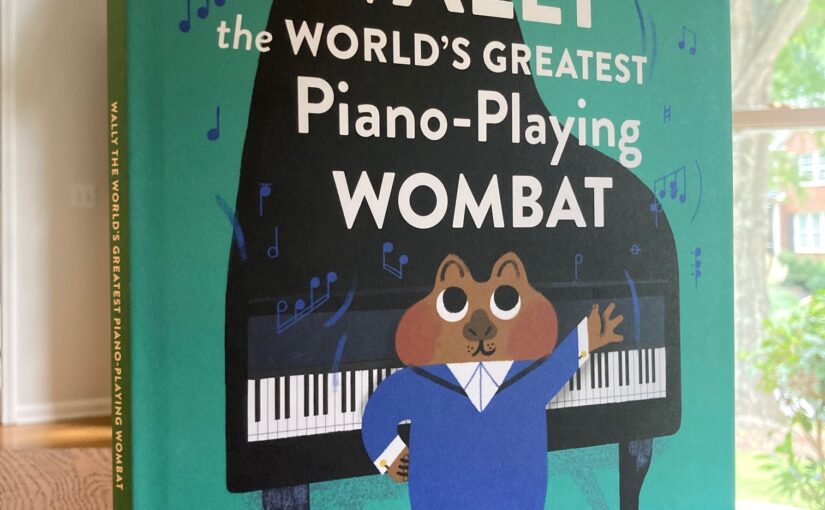
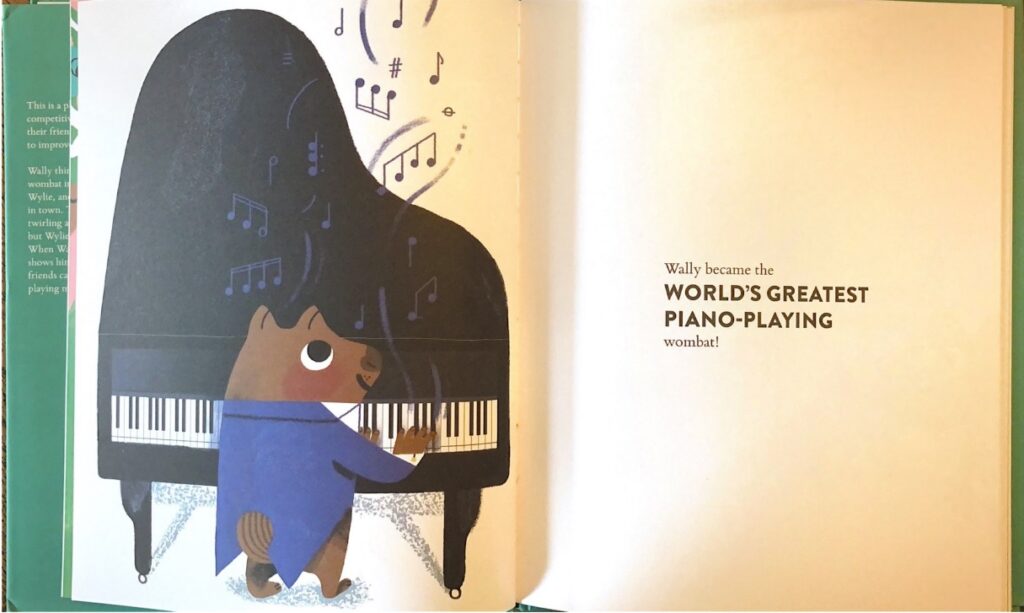
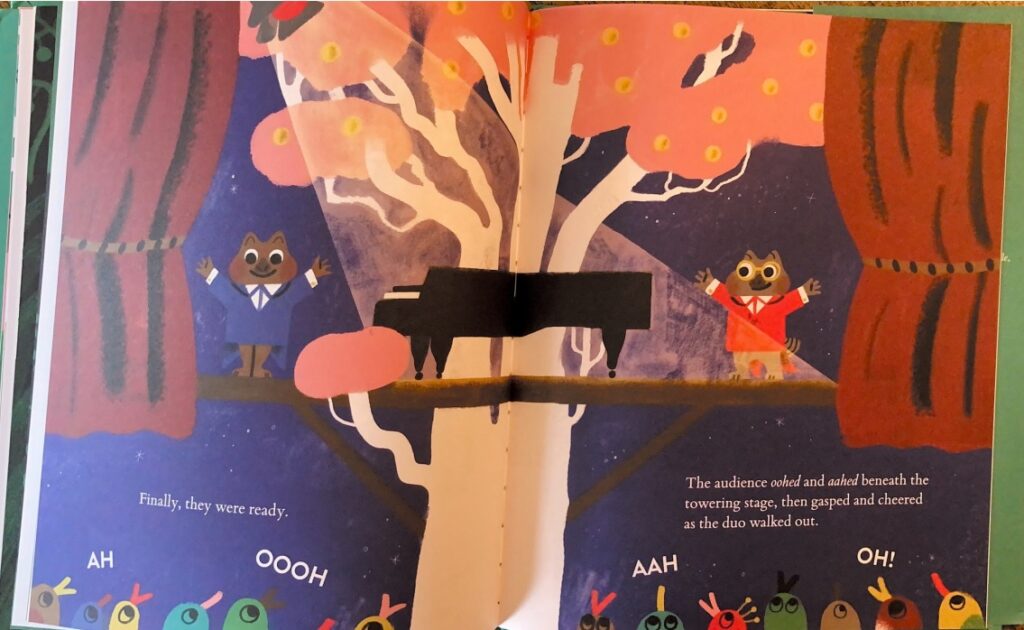



 Facebook
Facebook Twitter
Twitter Flickr
Flickr GooglePlus
GooglePlus Youtube
Youtube